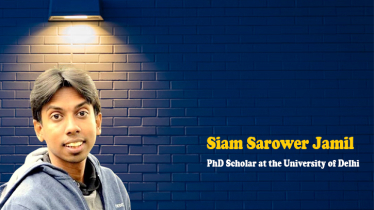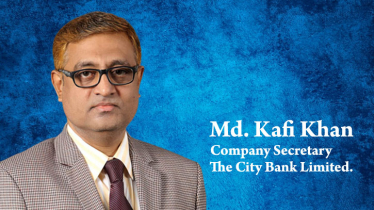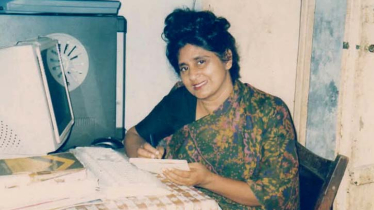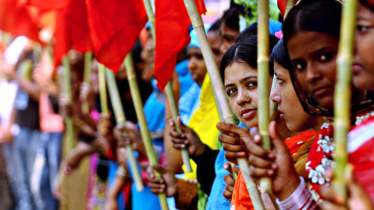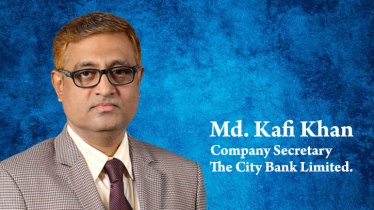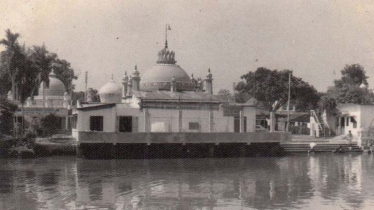
Photo: Daily Messenger
It should come as no surprise that Indian food is consistently ranked among the most popular dishes enjoyed around the globe. Because of its fragrant spices as well as its watery and delicious fish charchari, Dal soup, and variety of curries, Indian cuisine has captivated the hearts and appetites of many people all over the world.
Those who are familiar with Indian cuisine are aware that there is no other food that can compare to Indian food in terms of how well it satisfies their taste buds. But the Bengali food that is served among those Indian delicacies has a speciality that is a little bit distinct from the others. Sattvic, tongue-tingling spices, are used in Bengali cuisine, often including fish and rice. It used to be difficult for people of Indian descent who lived outside of India to locate genuine Indian cuisine that could genuinely satisfy their cravings for home-cooked food.
Indians, on the other hand, are more likely to go out to dine to relieve themselves of the responsibility of preparing meals at home, in contrast to Westerners. Indians who enjoy good food are accustomed to having their mother, daughter-in-law, or another family member make their meals. The cuisine of India is famous all over the world for the extraordinary flavours and spices that it uses. The wide variety of herbs used in Indian cooking yields dishes that are not only flavourful but also fragrant. These dishes can range from gentle, aromatic flavours to robust, dark, spicy flavours that can be customised to meet the preferences of any individual. In addition to contributing to the overall flavour of the dish, spices play an essential role in the history and culture of India.
Many recipes have been passed down through generations for centuries. Spices were initially developed as a way to preserve food when fresh produce was not available year-round. Today, herbs are used more for flavouring food than for their preservation qualities. Commonly used Indian spices include turmeric, cardamom, cumin, coriander, ginger, chilli powder and garam masala, which can create unique flavour combinations. Over time, this cuisine has become an integral part of Indian culture. This culinary culture also became an essential part of the country's national culture in the course of the Indian immigrants. Chicken tikka masala has now become an authentic British national dish. It is one of the most popular dishes and a perfect illustration of how Britain is adapting the outside world's influences into its own culture.
East London, a Bengali-dominated area of London, is like a small Bangladesh known to everyone as Bengali Town. Chinatown is noticeable in significant cities worldwide, but Bengali Town is probably only visible in London. The breath of daily life and customs of the people growing up in the rivers and streams of Bangladesh can be practically seen in this small Bengali town. A familiar smell like Bangladesh comes to the nose, the noise of a busy Bengali city comes to the ears, and you can hear Bengali melody. The famous Princelet Street, Buxton Road, Quaker Street, along with the main road Brick Lane, Henbury Street, walking along any alley will seem to be close to the environment of a city in Bangladesh. All the shops on both sides of the road are Bangladeshi-owned. From big fish markets, small grocery shops, hair salons, book stalls, and music shops to sweet shops, you cannot think of anything other than Bangladeshi. There are more than 100 restaurants in this brick lane. The area buzzes with Bangladeshi people talking in Bengali and Palligan or Bengali songs from any roadside music shop or restaurant. What is not found here? Everything can be found in this Bengali town throughout the year, starting from Bangladeshi vegetables, satkari from Sylhet, halal fish, and meat. How a vast culinary empire of Bangladeshis started in Billet. It would be appropriate to put a fact here that over ninety per cent of Bangladeshis in the Bangla Town area are from the greater Sylhet region.
The story begins in 1810. Although many believe that Indian restaurants in London or the UK were set up by Bangladeshi immigrants in the 1960s and 70s, the first curry house or Indian restaurant opened its doors in Britain about 213 years ago. Sheikh Deen Mohammed founded the first curry house on George Street near Portman Square in central London. Deen Mohammad was a legendary surgeon, Bengali traveller, entrepreneur, and British East India Company captain. He was the first Indian to publish books in English. Although many restaurants served Indian food, Deen Mohammed's Curry House was the first Bengali-owned Indian restaurant. From the article "The Story of London's First Indian Restaurant" written by Sejal Sukhadwala, "Sheikh Deen Mohammad was born in 1759 in the state of Bihar, part of the Bengal Presidency of India. He is the one who popularised Bangladeshi food in the restaurant". He founded this coffee house hoping to satisfy the spice cravings of British royalty returning from India. Hookah was also introduced for extra flavour and satisfaction at the end of an authentic Indian meal. But ultimately, the business did not last long. The restaurant closed after two years in 1812 when Dean Mohammed declared himself bankrupt.
In the late 19th century, a group of Punjabi and Bengali immigrants arrived in London and opened the first eateries serving traditional Indian dishes such as curries, dals parathas and pakoras. The food served in the canteen became so delicious and popular that many people flocked to this food every day. British diners' keen interest in Indian food led to the opening of another Indian restaurant, Veeraswamy's, at 99-101 Regent Street in 1926, and is known to be the oldest Indian restaurant. Its owner was Edward Palmer, an Anglo-Indian retired British Indian Army officer. An Indian Mughal princess and the grandson of another English general joined him. In the early years, Veeraswamy served Anglo-Indian cuisine, but in recent decades, based on the popularity of authentic Indian cuisine in the UK, regional Indian cuisine, including Punjab, Lucknow, and Kashmir, has been served, and the restaurant has a reputation across the country for quality food. From the beginning, Veeraswamy employed Sylheti chefs. Sylhet was home to the Mugh or Mugh cooks, who cooked for the zamindars. The British were particularly fond of chutney. Sylheti chefs were adept at creating new flavours by adding South Indian coconut chutneys to northern dishes, and the British loved the fusion.
But the success story behind the British Bengali restaurant began almost 70 years ago with the auspicious beginnings of Kohinoor and has been moving forward through time. This vibrant cuisine has come a long way on British soil and is now an integral part of the national culture. That is what this epic success is all about – proving that good food knows no boundaries. The Kohinoor Indian Restaurant opened in 1943 at 74 Mill Road and was the first Bangladeshi-owned restaurant in Cambridge. Krishnaveer Bahadur and his two brothers opened this restaurant. Krishnaveer is a resident of Sunamganj, Sylhet. On the eve of World War II, Krishnaveer moved to Britain in 1940. After coming here, many people, including Indian students, realised that the big problem for Indians is to be deprived of native food. Finally, Kohinoor restaurant in Cambridge was opened. The popularity of Indian delicacies began to grow among the English as well. Krishnaveer later opened two more restaurants with the same name in London and Manchester.
From that, the business success of Bangladeshi restaurants in Billet (England) started slowly. Word spread about this new restaurant run by Indians. As the demand for authentic Indian food grew across Britain, one restaurant after another started popping up. Today, many Bangladeshi communities are now associated with Britain's curry industry. Currently, there are more than 9500 Bangladeshi-owned restaurants in the UK. According to various sources, after the Second World War, about 20 small and large restaurants were owned by Bangladeshis, which increased to more than three hundred in the 60s. After a gap of two decades, in 1980, the number of Bangladeshi-owned restaurants stood at more than 3000. In the following decades, more Bangladeshi-owned restaurants began to spring up across Britain, serving traditional and modern versions of classic dishes such as Rogan Josh and Korma. When immigration laws were relaxed after 1991, many people from Bangladesh were allowed to enter England to seek work opportunities legally. Many decided to open their eatery as their preferred path due to the lower financial risk compared to other business ventures at the time. Nowadays, numerous restaurants with Bangladeshi style and name have opened in Bengali-dominated areas of major British cities.
About 85 per cent of Indian restaurants in the UK are run and owned by Bangladeshis. Since the 1940s, all Bangladeshi restaurants were run as Indian restaurants. Recently, many Bangladeshi-owned restaurants have been operating under the Bangladeshi name. The mind-blowing restaurants of rural Bengal give the taste of ultimate satisfaction to people's taste buds by adding diversity to the original cuisine of Bengal. For example, Gram Bangla, Amar Gaon, Kalapata, Dhaka Biryani House, Sundarban, Namaste, Baburchi, Krishna or Panchkhana all bring the gentle coldness of the beauty of Gram Bangla to an aesthetic euphoria. Bengal should be kept in the heart. Bengali's well-known dishes are served in these restaurants. Dishes ranging from various bhartas to fish curry, chicken tikka masala, korma and vindaloo or tindaloo are served. However, although Vindaloo or Tindaloo is unavailable in Bangladesh, this hot, spicy dish is prevalent in the UK. Over time, these recipes have become a big part of British culture. These Bangladeshi and Indian restaurants combine ancient traditions with modern flavours to create a new dimension of cuisine that has opened the door to a recent success on Indian soil.
With a rich array of flavours and aromas prepared using age-old techniques, the food served is genuinely novel, and it is no wonder why Bangladeshi or Indian cuisine is so famous worldwide. Former British Foreign Secretary Robin Cook declared chicken tikka masala as Britain's authentic national dish. The Prime Minister, Tony Blair, also recognised it as a favourite dish, hosting a meal at a Bangladeshi curry restaurant for his daughter's birthday. Bangladeshi-owned restaurants employ millions of people, most of whom are of Bangladeshi origin, and have an estimated annual turnover of £3.5 billion. The success of this vast curry industry saw the British Curry Awards, an annual awards dinner dedicated to the British curry industry, established in 2005. It has continued since then.
In 1810, the journey of Indian cuisine started from Portman Square in Central London with the efforts of Sheikh Deen Mohammed evolving with time. This is the juncture of a new time. A unique history of Bangladeshi cultural identity has brought a level of diversity to the country's cuisine. An indelible pride for future generations, a supremely satisfying sense of self-identity of the Bangladeshis in the billet (Great Britain).
The writer is educator, author, and researcher
Messenger/Datta/Bashar


